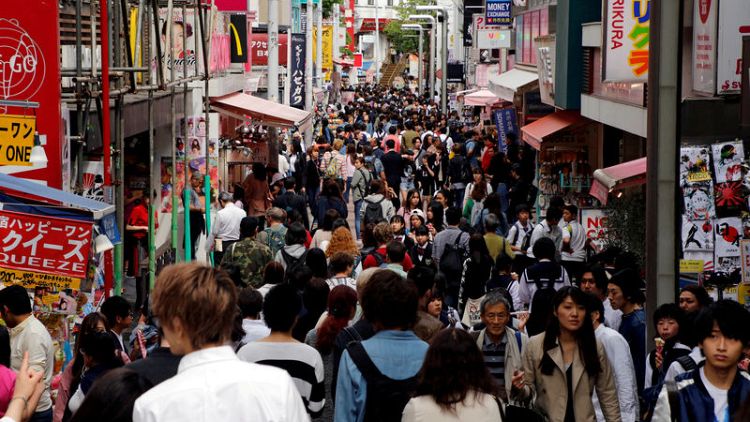By Leika Kihara
TOKYO (Reuters) - Japan's economic output exceeded its full capacity by the most in more than a decade in the second quarter, a hopeful sign for inflation as policymakers bet a strengthening economic recovery will help accelerate consumer prices to their 2 percent target.
A positive output gap occurs when actual output exceeds the economy's full capacity, as factories and workers operate above their most efficient level to meet strong demand.
In theory, a growing positive output gap should lead to a build-up of inflationary pressure, though the BOJ has conceded that structural factors could keep price growth subdued for longer than expected.
Some analysts also warn that economic growth will slow or even contract in July-September as a string of natural disasters disrupted output and hurt consumption. A slowdown in growth could further delay achievement of 2 percent inflation, a price goal the BOJ has been trying to reach since 2013.
"The positive output gap is good news for the BOJ. Rising oil prices could also underpin inflation," said Yoshiki Shinke, chief economist at Da-ichi Life Research Institute, adding that core consumer inflation could hit 1 percent in coming months.
"But it's doubtful whether inflation will accelerate further," he said. "Recent data hasn't been all that good, so we could see the economy contract in July-September."
Japan's output gap, which measures the difference between an economy's actual and potential output, stood at plus 1.86 percent in April-June, staying in positive territory for the seventh straight quarter, a BOJ estimate showed on Wednesday.
The result, which was the biggest positive gap since the quarter to December 2007, followed a 1.63 percent positive gap in January-March.
The data will be among key factors the BOJ will scrutinise when it releases fresh quarterly growth and inflation forecasts at its next rate review on Oct. 30-31.
The BOJ took steps in July to make its policy framework more sustainable by addressing the drawbacks of prolonged easing, conceding that it was taking longer to meet its price goal.
Rather than trying to change public perceptions on future price moves with shock stimulus, the BOJ now puts more focus on maintaining its stimulus programme for as long as possible so that a growing positive output gap will fire up inflation.
That approach is heavily reliant on a sustained economic expansion, which faces risks as escalating trade frictions and the aftermath of natural disasters weigh on business sentiment.
Japan's annual core consumer inflation hit 0.9 percent in August, ticking up slightly from July but remaining distant from the BOJ's percent target.
(Reporting by Leika Kihara; Editing by Shri Navaratnam)



